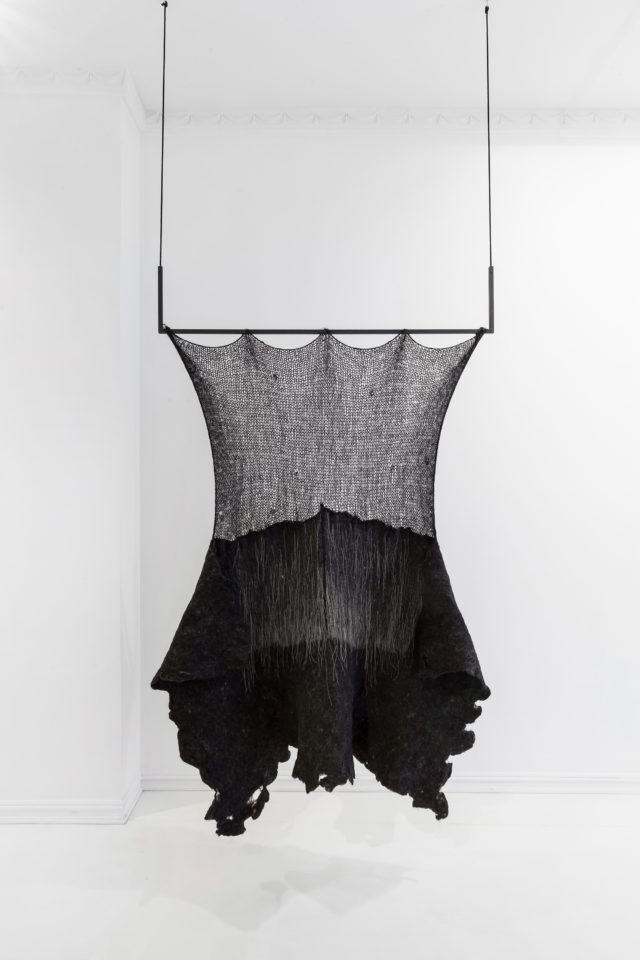Annie Johansson
—In the exhibition “Hugs Your Body’s Contours and Gets Even Softer and More Fitting With Each Use”, Annie Johansson has investigated the extensions of the human body into the textile material through sensual desires. This boundless desire is for her about a lust that goes via and then beyond the desire for other bodies. Like the Begin-nuns* almost erotic relationship to their natural environment, she searches for it in her material explorations.
Wet felting and weaving with a back strap loom are techniques Johansson is specifically interested in because of how they are so completely dependent on the physicality of one’s body. In the wet felting processes, the body’s movement and friction together with water are required for the wool to be felted together. The warp threads in the back strap loom in turn, require the weight of the body to become tensioned into a weavable warp. The human body’s physicality and its extension into the textile material is what forms the basis for the construction of the back strap loom as a tool. In that way there is a constant reminder of the human body’s presence, size and movement pattern in the materials the loom produces.
With the body and its textile environment as reference, Johansson has followed her fantasies and tactile desires in an embodiment of an indeterminate body free from gender. This abstract body is present both in the construction of the back strap loom and in the shape of the wet felted objects; objects that are in flux and refuse rigid explanations to avoid turning into metaphors that define a meaning.
* The Begin-nuns appeared during the early Middle Ages and are seen by some today as one of the earlier women’s movements in Europe. They believed that the true relationship with God, which in the long run meant everything where God could be found, especially in nature, was through the bodily relationship and then above all through the female bodily relationship. This bodily desire that the Begin nuns described in their passion for all living things, and how this almost sensual desire was directed at something other than the opposite of our bodies inspired Johansson in the work Body Folds (Sexy Nature); a black wet-felted sculpture in wool with couching stitch in silver over glossy polyester fringes, hanging from the ceiling in a black silk rope.




